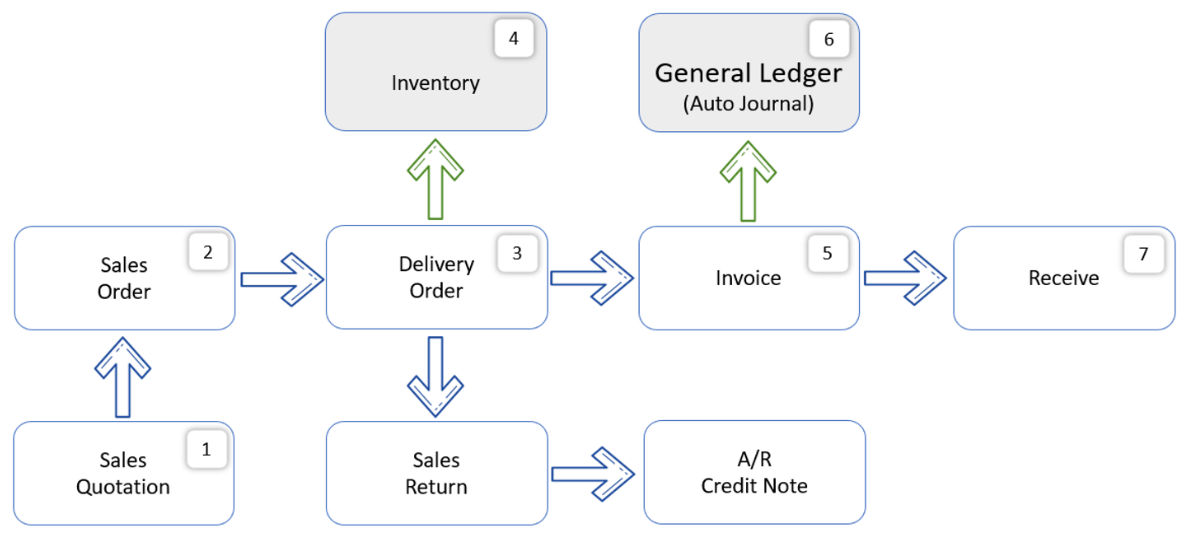Sales
Sales transactions in the context of ERP applications are the process of recording and managing sales transactions in a company. In ERP applications, these sales transactions can cover various aspects, such as the sale of products or services, inventory management, ordering, delivery of goods, billing, to financial management.
Sales transactions in the SOFICloud ERP application allow companies to record and manage sales data in an integrated and efficient manner, allowing companies to monitor and analyze their sales performance more easily and accurately.
Some things to consider in managing sales transactions in the SOFICloud ERP application include:
- Ensuring the accuracy of data entered at each stage of the transaction, from ordering to billing.
- Paying attention to the integration system with other modules in the SOFICloud ERP application, such as the inventory system, production, and finance. So that data can be integrated well and accurately.
- Ensuring the existence of a control and supervision system at each stage of the transaction, thus minimizing the risk of errors or data misuse.
By optimizing the management of sales transactions in the SOFICloud ERP application, companies can reap benefits such as:
- Increase efficiency and accuracy in managing sales data.
- Speed up the decision-making process based on accurate and integrated sales data.
- Improve the quality of service to customers through more effective and efficient management of orders, deliveries, and billing.
- Earn greater profits through the optimization of sales processes and inventory management.
Flow Penjualan
In general, the following is the sales flow applied in the SOFICloud ERP application. See Figure 8
Here is an explanation of the sales flow in the SOFICloud ERP application, from Sales Quotation to Receipt:
Sales Quotation: This stage is the initial stage in the sales process. A Sales Quotation is a document that contains information about the product or service to be sold, price, quantity, and delivery time offered to potential buyers. After the Sales Quotation is made, potential buyers can agree or reject the offer.
Sales Order: After the Sales Quotation is approved, the next step is to create a Sales Order. A Sales Order is a document that contains details of the product or service ordered by the customer, including the quantity, price, and delivery time. Sales Orders are used to initiate the process of delivering goods or services.

- Delivery Order: After the Sales Order is created, the goods or services ordered by the customer are delivered through the Delivery Order. The Delivery Order contains information about the goods or services delivered, quantity, and delivery address.
- Invoice: After the goods or services are delivered, the company will send an Invoice to the customer as proof of billing. The invoice contains information about the bill amount, including price, discount, and tax. The customer will then pay the bill.
- Receipt: After the customer makes the payment, a Receipt is created as proof of payment. The receipt contains information about the amount paid, date of payment, and method of payment.
- Return and Credit Note: If the goods delivered do not match the order or there are other errors, the customer can make a Return or return the goods. The company will then issue a Credit Note as a refund or exchange of goods. The Credit Note contains information about the amount of money returned or information about the exchanged product.
In the SOFICloud ERP sales flow, each of the above stages is well integrated, allowing the company to monitor and manage sales transactions more effectively and efficiently. In addition, the management process for returns and credit notes is also well integrated, making it easier for companies to manage requests for product returns or customer refunds.